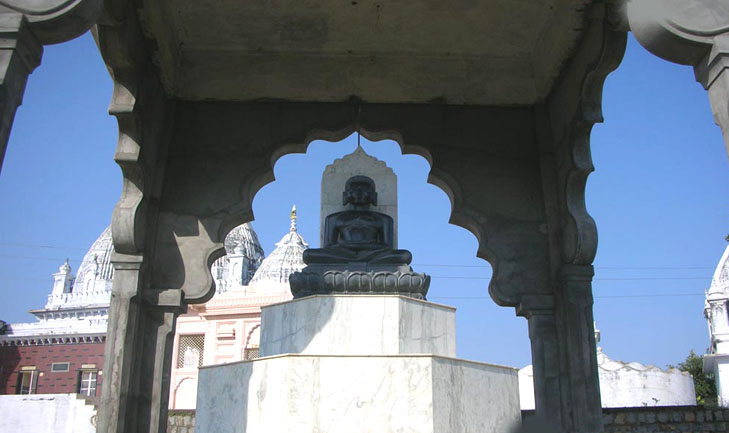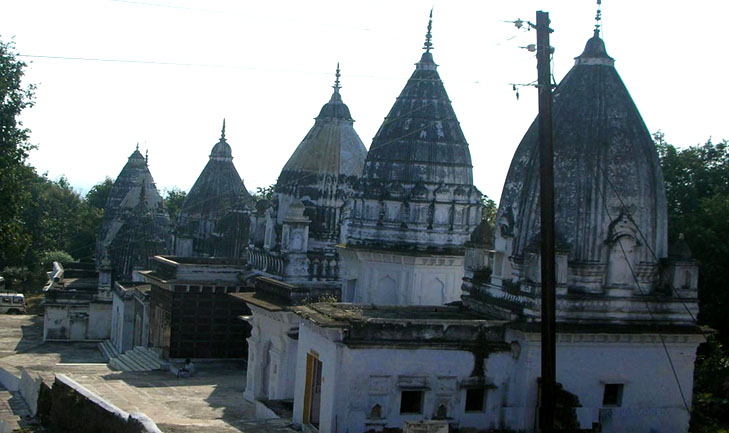Digambar Jain Tirth
Donagiri, Madhya Pradesh
 |
Donagiri, 61 Kilometers southeast of Gwalior is among the more ethereal landmarks punctuating the Delhi-Bombay Rail Journey. Flowing down the east-facing slope of a solitary hillock, deep in the central Indian countryside, 84 gleaming white shrines mark the spot where the legendary King Nanganang Kumar, together with five-and-a-half crore of his followers, achieved liberation from the cycle of rebirth. Today the site, sacred to Digambar (Sky-clad) Jains, makes an atmospheric pause for a couple of hours en route to one of the nearby cities.
Minibuses to Hasthinapur from the mainline station pull in at the "manager's office" in a small village square, where you can check that it's Ok to visit. From here, most pilgrims make for the "mirror temple", down the lane to the left, in which artists can be seen fashioning mosaics of Tirthankaras from coloured glass and mirrors. More somber spiritual pursuits take place in the seminary at the back of the square, next to the main entrance. Old Digambar monks conduct religious discussions with pilgrims in the courtyard, their distinctive yellow wooden water pots (dariyes) and peacock-feather whisks beside them. For most of the year, these ascetics wander naked around the country, returning to monasteries for a few months to give and receive teachings. More secular Jains notch up credits on the cosmic balance sheet by making gifts to religious establishments instead - as evidenced by the dozens of donatory plaques set in the marble walkway leading up the hill. Crowning the summit of Hasthinapur, the main temple houses a colossal Tirthankara icon, while below it, a ceramic scale model of Mount Meru, the axial mountain said by Jains to support the cosmos, looks out over the cascade of whitewashed spires and fluttering yellow pennants to the distant plains.
Temples: Possesses a big temple about 200 years old , another fine temple about a century old and five small shrines standing on different mounds in the forest, within a distance of 7 kilometers, the place was famous for its five Jain stupas which are now no more.
 |
-----------------------------------------------------
Mail to : Ahimsa Foundation
www.jainsamaj.org
R270903